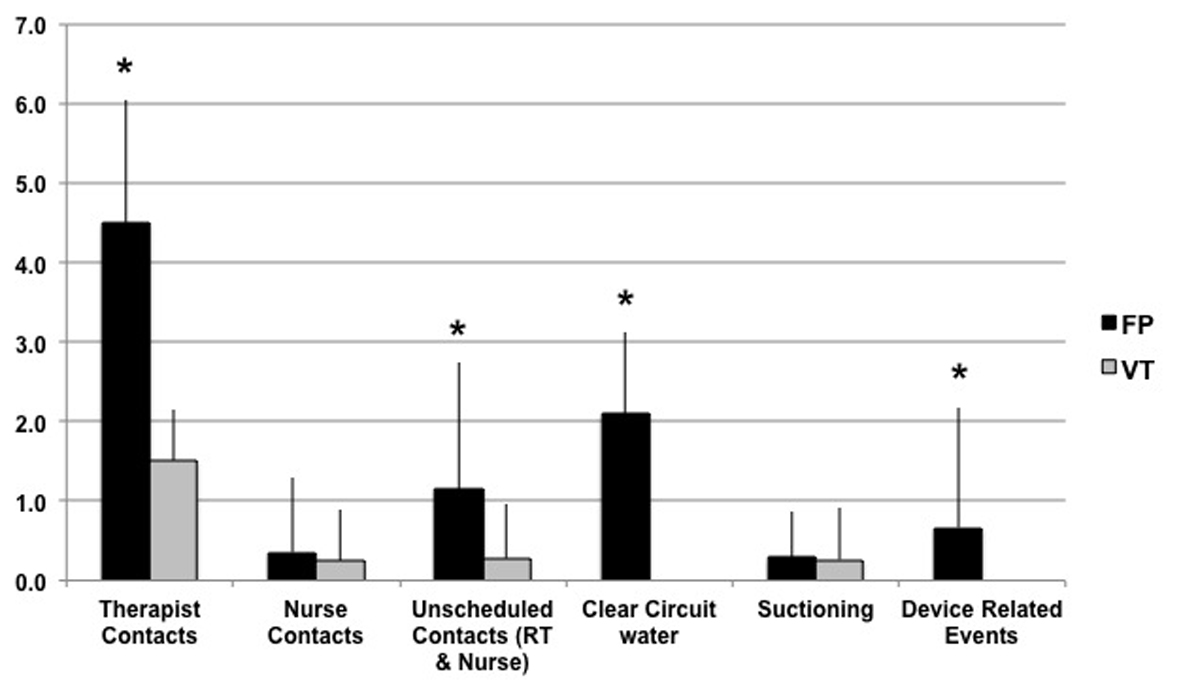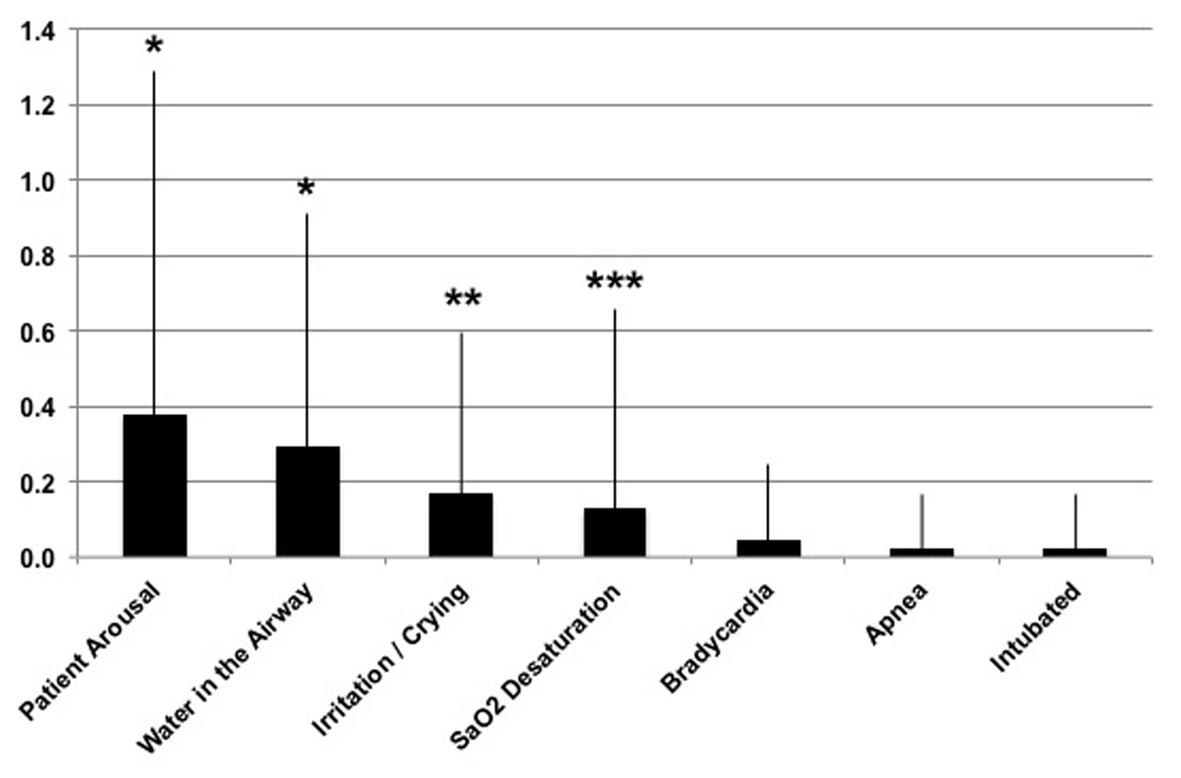
Figure 1. Comparison of primary effort-related categories and device-related outcomes. The tally of device-related staff interventions was compared between the conventional humidifier (FP) and a purpose built HFNC system (VT). The difference in device-associated staff contacts between platforms was significant for total respiratory therapist (RT) contacts as well as total unscheduled contacts (RT and nurse). Note that the total therapist contacts included routine checks/charting. A breakout of these contacts revealed differences in clearing circuit water, and during these contacts circuit condensate was associated with device-related events only in the FP platform. Data are presented as mean ± SD per 8 h of observation. *P < 0.001.
